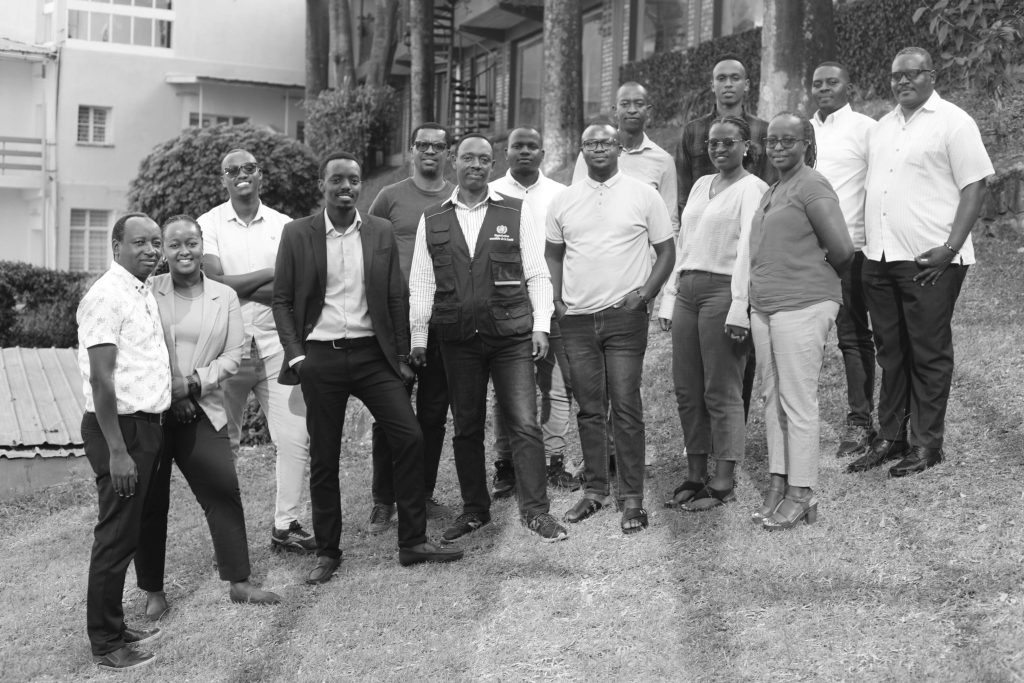Overview
In early 2019, HISP Rwanda embarked on a landmark project to deploy DHIS2 in Burundi. The national Ministry of Health had identified fragmented data collection and low reporting rates as significant barriers to achieving accurate health indicators. Through collaborative efforts with the Ministry’s Health Information System Directorate and international partners, we configured and launched a unified DHIS2 platform that integrated maternal health, immunization, HIV/AIDS, and malaria modules. This blog post delves into the comprehensive approach, challenges, and outcomes of the Burundi DHIS2 deployment.
Objectives
- Unify Health Data Collection: Replace multiple incompatible systems with a single DHIS2 instance to ensure consistent data entry and reporting.
- Enhance Data Quality: Implement validation rules and capacity-building activities to reduce data entry errors.
- Improve Decision-Making: Provide real-time dashboards and analytic tools to empower district and national-level stakeholders.
- Establish Local Capacity: Train Burundian health staff and create a sustainable mentorship model to maintain and scale the system.
Pre-Deployment Assessment
- Needs Assessment Workshops: Conducted on-site surveys in Bujumbura and Gitega to map existing health workflows and identify connectivity gaps.
- Stakeholder Consultations: Engaged representatives from the Ministry of Health, UNICEF Burundi, MSF, and local NGOs to define priority indicators, data elements, and module requirements.
- Technical Infrastructure Review: Evaluated server hosting options—national data center versus cloud—and decided on a hybrid approach: local mirror servers complemented by a cloud-hosted backup to ensure redundancy.
Implementation Strategy
1. System Configuration & Customization
- Data Element Mapping: Collaborated with the Ministry’s M&E unit to align DHIS2 data elements with Burundi’s national health indicator guidelines. Adapted maternal health indicators (ANC visits, skilled birth attendance), immunization schedules (BCG, measles, pentavalent), and HIV/AIDS case definitions.
- User Roles & Access Control: Defined hierarchical user roles—national administrators, provincial supervisors, and facility data clerks—to ensure appropriate data access and governance.
- French-Language Localization: All DHIS2 forms, menus, and help texts were translated into French to reflect Burundi’s official language, reducing training friction.
2. Capacity Building and Mentorship
- Train-the-Trainer Model: Selected 20 regional mentors from existing Ministry staff. Conducted intensive week-long workshops in Bujumbura, equipping them with advanced DHIS2 skills (configuration, dashboard creation, troubleshooting).
- Provincial Workshops: Regional mentors cascaded training workshops in each of Burundi’s 18 provinces. Over a six-month period, more than 500 data clerks and district health officers attended hands-on sessions covering data entry, analytics, and report generation.
- Ongoing Support Mechanisms: Established a WhatsApp-based support group for all trained staff to share technical questions, circulate troubleshooting tips, and schedule ad hoc refresher sessions.
3. Data Quality Improvement
- Validation Rules: Embedded validation rules in DHIS2 (e.g., facility code mandatory, age band consistency) to catch common errors at data entry time.
- Monthly Data Quality Audits: Regional mentors performed on-site data quality reviews using standardized checklists—verifying completeness, consistency, and timeliness. Resulting feedback loops reduced data entry errors by 25% in the first year.
- Automated Error Reports: Configured scheduled DHIS2 scripts to generate weekly error reports, which encouraged facility managers to correct discrepancies promptly.
4. Analytics & Dashboards
- Maternal Health Dashboard: Created interactive visualizations tracking ANC1, ANC4, and facility-based deliveries by province. National M&E teams used these dashboards to identify districts lagging behind in ANC coverage, leading to targeted community outreach.
- Immunization Coverage Tracker: Built maps showing pentavalent and measles vaccine coverage. During a measles outbreak in Gitega Province late 2019, the immunization tracker pinpointed low-coverage communes, guiding vaccination campaigns that increased coverage by 18% within two months.
- Malaria Surveillance Module: Implemented weekly malaria case trend lines and heat maps. When a malaria cluster emerged in Rumonge District, district teams mobilized rapid net distribution and indoor residual spraying.
Challenges and Mitigation
- Connectivity Constraints: Rural facilities had intermittent internet. We introduced offline data entry via DHIS2 Android app, enabling data clerks to work offline and sync when connectivity was available.
- Language Barriers: Some health workers were more comfortable in Kirundi. While DHIS2 does not yet support Kirundi fully, we provided PDF job aids in Kirundi and French to minimize confusion.
- Power Outages: Frequent electrical blackouts in remote provinces hindered server uptime. We provided solar backup kits to 12 key health centers, ensuring at least 6 hours of daily uptime.
Impact
- Reporting Rate Improvement: Facility reporting rates improved dramatically—from 45% pre-DHIS2 to 92% within one year of full deployment.
- Disease Surveillance: Real-time malaria trend analysis and early warning signals led to a 15% reduction in malaria hospitalization rates in Gitega and Rumonge.
- Maternal Mortality Reduction: ANC4 coverage increased by 22%, and skilled birth attendance rose by 18% in provinces using the new DHIS2 platform, contributing to a 12% reduction in maternal mortality.
- Capacity Institutionalization: Over 50 local mentors now manage monthly data quality reviews, ensuring sustainability without relying on external consultants.
Partners
- Ministry of Health, Burundi: Provided leadership, policy guidance, and facilitated regional stakeholder coordination.
- UNICEF Burundi: Funded translation of materials and supported distribution of solar kits.
- Médecins Sans Frontières (MSF): Collaborated on integrating EMR data from Bujumbura clinics, reducing duplicate patient records.
- University of Burundi School of Public Health: Hosted data use workshops and contributed local research.
Lessons Learned & Next Steps
- Early Stakeholder Engagement: Engaging district-level stakeholders early in the configuration process fostered local ownership and smoother rollout.
- Offline Capabilities Are Essential: In low-connectivity settings, offline DHIS2 apps and solar power are critical for uninterrupted data entry.
- Language Localization: Providing resources in local languages (Kirundi, French) is vital to ensure user adoption and accuracy.
Next Steps: By Q3 2025, HISP Rwanda will pilot a solar-powered DHIS2 kiosk model in remote health centers and integrate a community SMS-based reporting module for hard-to-reach areas.
